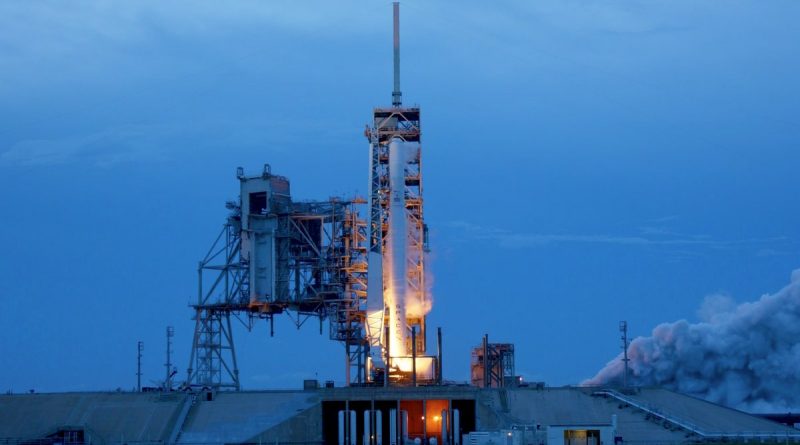Hold-Down Engine Test Clears Way for third Falcon 9 Launch in Nine Days

Keeping the pedal to the metal, SpaceX executed a Static Fire Test on Thursday for the next Falcon 9 rocket that is targeting liftoff as early as Sunday with the Intelsat 35e satellite.
It has already been a very busy seven days for SpaceX – launching two rockets within 49 hours last Friday and Sunday out of Florida and California, carrying Bulgaria’s first telecommunications satellite into a high-energy transfer orbit and dispatching a group of ten Iridium-NEXT Communications craft to Low Earth Orbit. Both launches also achieved successful Drone Ship Landings – one in the Atlantic and one in the Pacific – and both ships returned to their respective home ports within 24 hours of one another this week.
Now, the company is eyeing its third launch in nine days to continue pushing for new records, including the fastest turnaround for Kennedy’s Launch Complex 39A. Sunday will also see the homecoming of the Dragon SpX-11 spacecraft after a month-long stay at the International Space Station, targeting a parachute assisted landing in the Pacific Ocean to return valuable science samples from orbit.
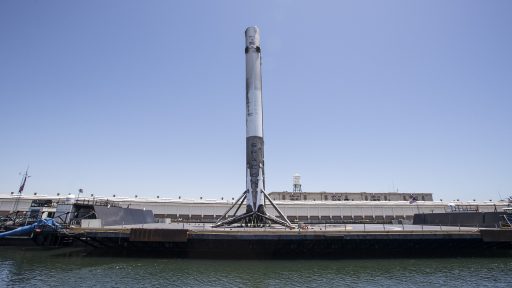
Tasked with lifting Intelsat 35e will be a rare beast, an expendable Falcon 9 rocket without grid fins and landing legs, devoting its entire performance to lifting the 6.76-metric-ton multi-band satellite into a Geostationary Transfer Orbit. Of the nine Falcon 9 missions this year, only two so far have disposed their first stages.
It is a fairly tight launch flow to make the Sunday target with a window of 23:35 to 0:34 UTC and weather is also looking less than ideal with only a 40% chance of acceptable conditions.
Gearing up for its tenth launch of the year, SpaceX has already surpassed its previous record of eight launches in a calendar year, in part owed to a trouble-free string of missions by the Falcon 9 as well as the first two re-use missions that provided some mitigation in a bottleneck of core stage production capacity at SpaceX’s main manufacturing base in Hawthorne, California.
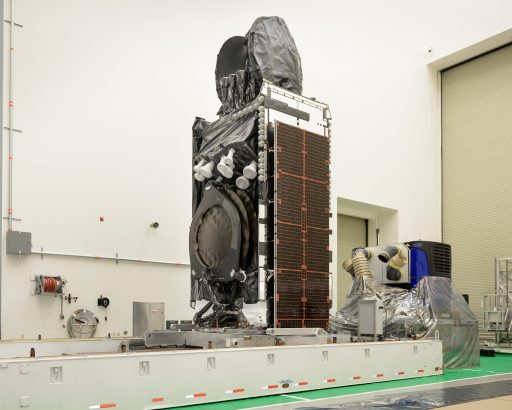
One of the less visible contributors is Launch Complex 39A that provided SpaceX with the luxury of very fast turnarounds as only occasional touch-ups to the ground infrastructure at the former Saturn V & Shuttle Pad were needed in between missions.
The ability to perform missions less than ten days apart from the same pad also highlights a new potential issue that may be looming in the not too distant future – the number of East Coast Drone Ships. ‘Of Course I Still Love You’ returned to Port Canaveral with twice-flown Booster 1029 on Thursday; had Sunday’s mission been a recovery flight, chances are that the Drone Ship would not have been ready for another recovery – and that is with SLC-40 still standing down due to ongoing repair work after the pad received damage last September.
SpaceX is in some rush to get Intelsat 35e off the pad, in part to avoid the July 4th holiday and more importantly due to an upcoming maintenance period on the Eastern Range that will cause a downtime of around three weeks without any launch activity. This time will provide SpaceX with an opportunity to focus on SLC-40 repairs and begin the process of outfitting LC-39A for the Falcon Heavy debut mission still expected to reach the launch pad around the October time frame.

The booster for Intelsat 35e, identified by serial number 1037, was seen on the road to SpaceX’s McGregor test site in the second half of May for a full-duration firing on the test stand before being shipped to the Florida launch site with the second stage going through a similar flow. Operations at LC-39A started within hours of the BulgariaSat-1 launch last Friday with the usual shakedown of the launch pad to identify work needed ahead of being able to support the next launch. LC-39A performed like a champ once again, permitting only a six-day turnaround between BulgariaSat-1 and the Intelsat 35e Static Fire.
The two-stage Falcon 9, still missing its payload, rolled up the ramp to the launch pad on Thursday and took its vertical launch position in the afternoon. Operations drifted behind schedule throughout the day and the Static Fire was pushed five hours into an eight-hour long test window, providing the margin needed to close out final open items.
Featuring a Block 3 first stage and Block 4 second stage, Falcon 9 headed into fueling at the T-1 hour mark to receive over 500 metric tons of sub-cooled Liquid Oxygen and chilled Rocket Propellant 1. Although the Static Fire only involves the first stage in an actively-firing role, the second stage goes through a full fueling sequence & pressurization cycle to allow the Static Fire to serve as a complete end-to-end test of the rocket and ground infrastructure.
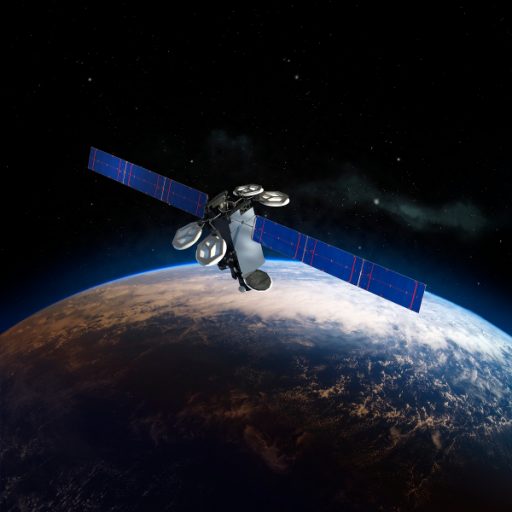
Flames erupted from the storied LC-39A flame trench at 0:30 UTC on Friday, 8:30 p.m. local on Thursday as Falcon 9 ignited its nine Merlin 1D engines, building up thrust to reach operational conditions for only a brief moment as part of the 3.5-second test.
Per the usual procedure, Falcon 9 went into safing after shutdown and engineering teams went through a quick review of data to ensure all necessary performance parameters were captured and the firing reached its planned duration. This was confirmed through SpaceX on Twitter and Falcon 9 was expected to head into de-tanking in the overnight hours to move back into the hangar on Friday to meet its payload.
The timeline for a Sunday liftoff does not allow margin for any errors with Falcon 9 meeting its payload Friday and Saturday before returning to the pad on Sunday at the latest in order to enter its launch count. Should a Sunday attempt not be possible for any reason, SpaceX reserved a backup slot on Monday, looking at 50/50 weather odds.
F9/Intelsat: Here’s a view of the Falcon 9 static firing at pad 39A this evening pic.twitter.com/VD4lF7OcYm
— William Harwood (@cbs_spacenews) June 30, 2017
Weather is currently in a typical summer time pattern for Florida with thunderstorms forming over Central Florida in the afternoon hours. Winds from the south west will then push storms toward Cape Canaveral, creating concerns associated with Anvil and Cumulus clouds. Steering flow is expected to decrease slightly on Monday which could keep storms further inland and create somewhat more favorable odds of acceptable conditions during the hour-long window.
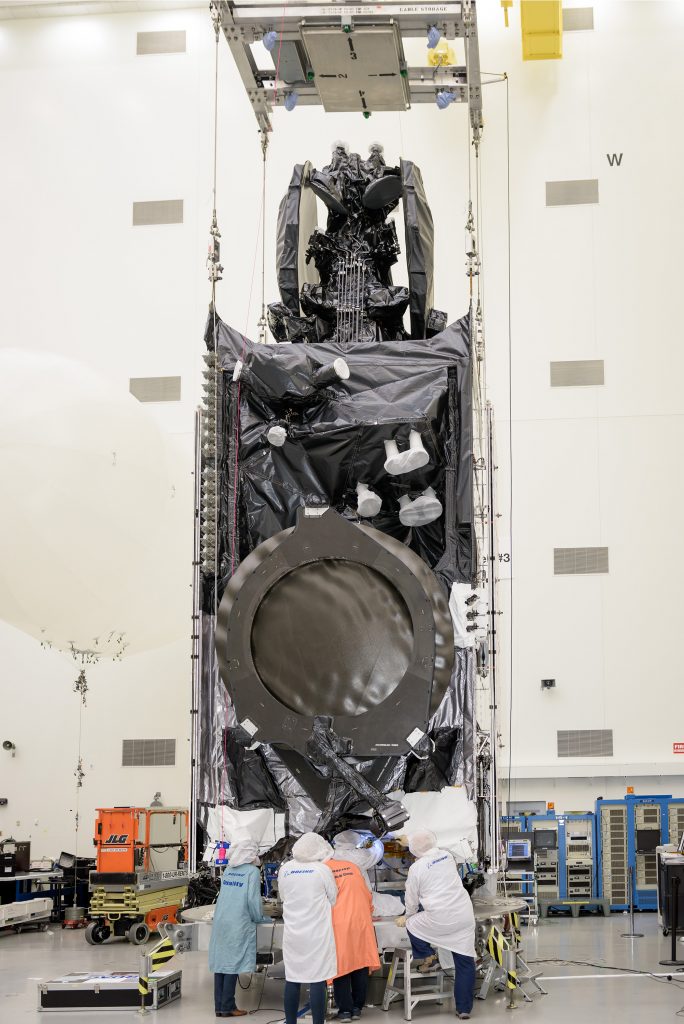
Flying expendable, Falcon 9 will lift off its pad and pitch & roll onto a south-easterly trajectory, firing the first stage for 165 seconds – dedicating its full performance to the primary mission to accelerate the stack beyond 2.7 Kilometers per second. From there, the second stage’s MVac engine will take over for an initial burn of just over five and a half minutes to place the stack into a Parking Orbit for a coast phase toward the equator. Re-starting its engine, the second stage will push Intelsat 35e into a highly elliptical Geostationary Transfer Orbit – whether this mission features a guided shutdown or makes a burn to depletion to decrease the delta-v to GEO has not yet been revealed.
Intelsat 35e is the fourth satellite in Intelsat’s ‘Epic’ project that employs several multi-band communications satellites with frequency re-use to create a highly flexible architecture providing the entire palette of communications services on a global scale. From its drop-off point, Intelsat 35e will complete a series of orbit-raising maneuvers to attain a stationary position over the Atlantic from where it can provide coverage to Europe, Africa, the Caribbean and South America.
The Intelsat 35e satellite combines a high-throughput Ku-Band and C-Band package to deliver high-performance services through a combination of C-Band wide and spotbeams and large Ku-Band coverage zones. The craft hosts 124 C-Band transponders (36MHz equivalent) and 39 (36MHz equivalent) Ku-Band transponders delivering Direct-to-Home Television distribution via Ku-Band and services for mobility and government applications in Europe, South America, the Caribbean, and Africa via C-Band.
The satellite will replace the aging Intelsat 903 at 34.5°W with a seamless transfer of customers from the 15-year old satellite to the new Epic spacecraft. Testing of Intelsat 35e, budgeted for 45 days, will be carried out at 33°W followed by a five-day drift into the operational location.

